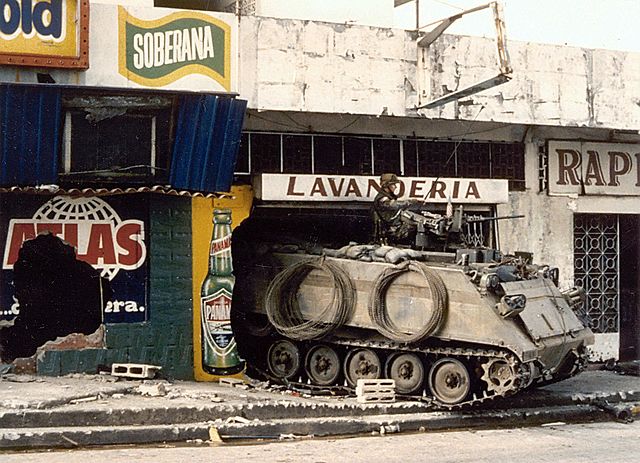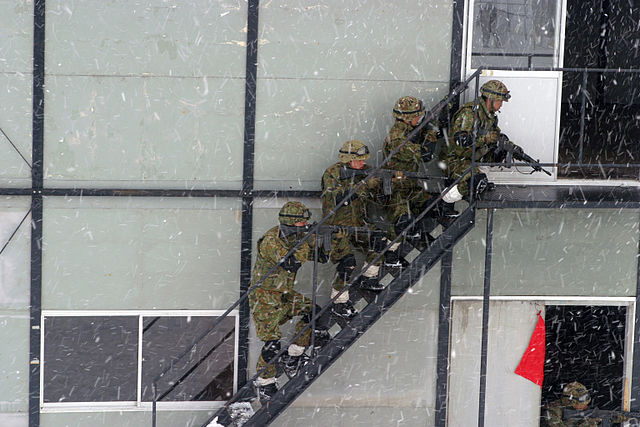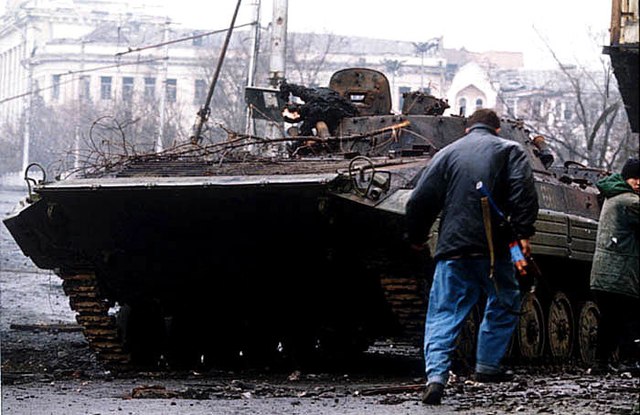Urban warfare is warfare in urban areas such as towns and cities. Urban combat differs from combat in the open at both operational and the tactical levels. Complicating factors in urban warfare include the presence of civilians and the complexity of the urban terrain. Urban combat operations may be conducted to capitalize on strategic or tactical advantages associated with the possession or the control of a particular urban area or to deny these advantages to the enemy. It is considered to be arguably the most difficult form of warfare.
A United States Army M113 armored personnel carrier during the 1989 United States invasion of Panama
JGSDF soldiers practice MOUT tactics in the Ojojibara Maneuver Area of Sendai, Japan during an exercise in 2004
The Battle of Tampere during the 1918 Finnish Civil War was the largest urban warfare in the Nordic war at the time, measured by the number of troops involved. The picture shows the ruins of the city of Tampere after the battle.
Japanese troops in the ruins of Shanghai during the Second Sino-Japanese War
Battle of Grozny (1994–1995)
The First Battle of Grozny was the Russian Army's invasion and subsequent conquest of the Chechen capital, Grozny, during the early months of the First Chechen War. The attack would last from December 1994 to March 1995, which resulted in the military occupation of the city by the Russian Army and rallied most of the Chechen nation around the government of Dzhokhar Dudayev.
A Chechen militia fighter takes cover behind a burned-out Russian BMP-2 armoured vehicle
A Chechen fighter during the Battle of Grozny, January 1995
A Chechen civilian prays in Grozny, January 1995. The flame in the background is coming from a gas pipeline hit by air-burst shrapnel.
A Chechen fighter near the Presidential Palace in Grozny, January 1995








